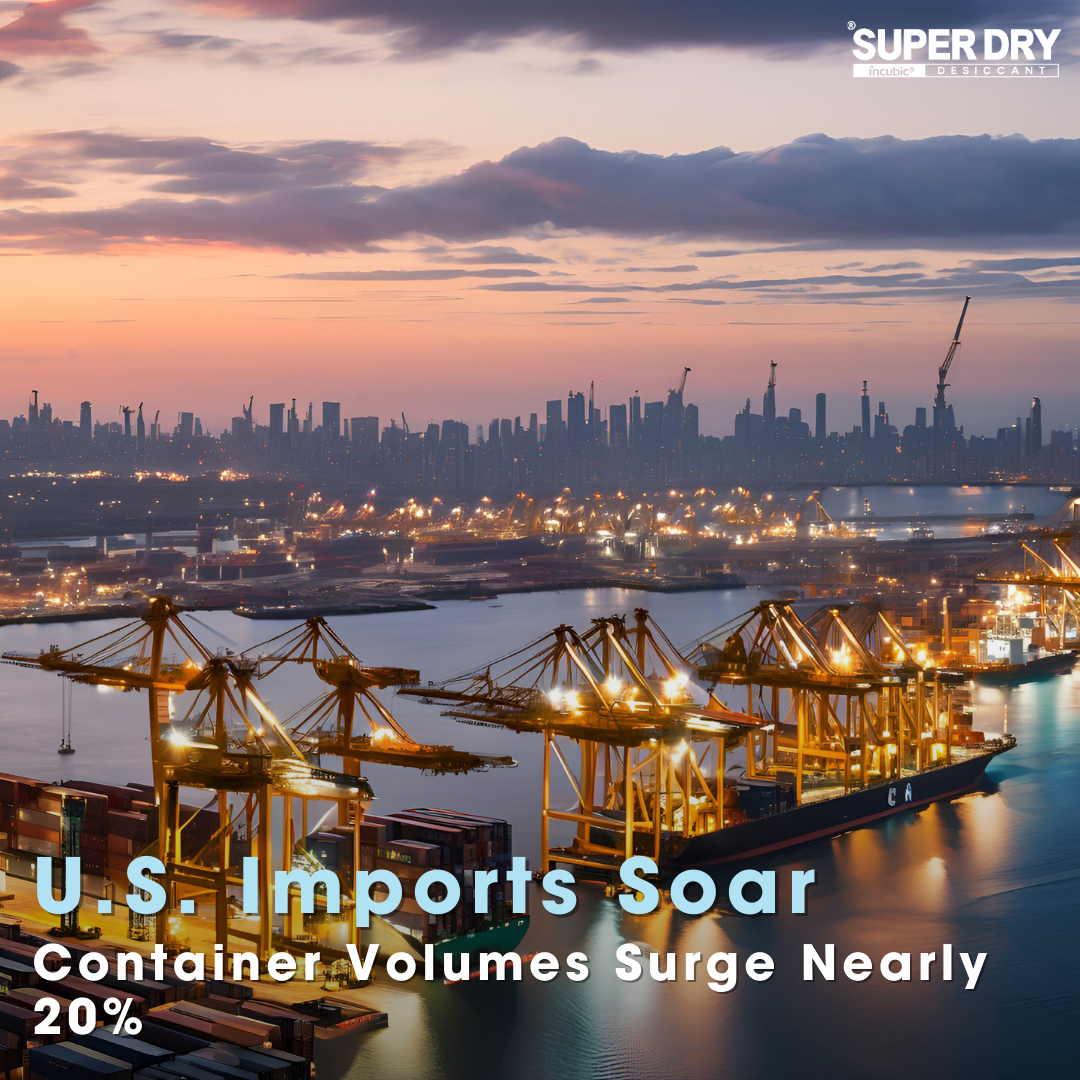U.S. Imports Soar: Container Volumes Surge Nearly 20%

The U.S. container shipping industry is witnessing unprecedented growth, with inbound container volumes skyrocketing by nearly 20% in August 2024. According to the latest data from shipping expert John McCown, the ten largest U.S. container ports reported a 19.3% year-over-year increase in inbound container volumes, marking the eleventh consecutive month of growth.
A Record-Breaking Year for U.S. Ports
This surge in imports solidifies 2024 as a standout year for U.S. port activity. “The solid August growth marks eleven straight months of increases in year-over-year volume,” said McCown. He further noted that the first eight months of 2024 saw a 16.9% rise in inbound volume, making it the strongest performance since the pandemic boom in global shipping. In August alone, U.S. ports handled 2,211,831 twenty-foot equivalent units (TEUs), a number just shy of the all-time record set in May 2022.
Economic Strength Drives Growth
While some in the industry speculated that the looming threat of a potential labor strike at East and Gulf Coast ports might be driving the surge in imports, McCown’s analysis suggests that this is not the primary cause. Instead, he pointed to underlying economic strength, including stable inventory levels and inventory-to-sales ratios, as more likely factors behind the increase in container volumes.
McCown also highlighted a significant shift in port activity between the West and East Coasts. “The data through August doesn’t show noticeable signs of pulling forward shipments related to the ILA situation, but it does show some coastal shifting,” he said. This shift has led to West Coast ports outpacing their East and Gulf Coast counterparts for eleven of the past thirteen months. In August, West Coast ports experienced a remarkable 28.4% increase in inbound volumes, while East and Gulf Coast ports saw a more modest rise of 10.5%.
Potential Impact of Labor Strikes
Despite McCown’s reassurance that the surge in imports is not directly tied to labor concerns, the possibility of an International Longshoremen’s Association (ILA) strike at East and Gulf Coast ports remains a significant topic of discussion. McCown attributes the stark 18.1 percentage point difference in performance between the coasts to this concern, with shippers preemptively diverting goods to West Coast ports to avoid potential disruptions.
A Call for Better Moisture Protection
With such an influx of imports and goods spending more time in transit or waiting at congested ports, there’s an increased risk of damage — particularly from moisture. Container ships, especially those rerouted to longer or less favorable routes due to congestion, are vulnerable to changing weather conditions, resulting in potential moisture damage to cargo.
As businesses navigate these new shipping realities, they must reconsider their moisture protection strategies. Super Dry, a leader in moisture control solutions, is positioned to help companies safeguard their cargo from the risks posed by fluctuating temperatures and extended transit times.
Contact Super Dry today to protect your merchandise and avoid costly damage!
